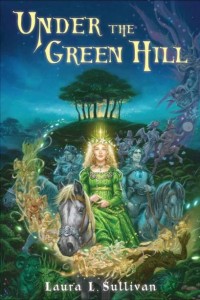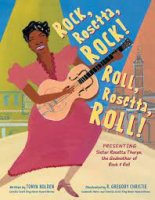With a serious fever striking children across the country, the four Morgan children, Meg, Rowan, Silly, and young James, are sent to the English countryside to stay with relatives they have never met. They acquire two additions to the party, Dickie Rhys, who is somewhat a friend, and Finn Fachan, an unpleasant spoiled rich boy that none of them care for, but who is included due to some maneuvering on his father’s part. The children are uncertain about the arrangement, but the reality turns out to be both more wonderful and more terrifying than they expected, when they find themselves living side by side with fairies, and are inexorably drawn into a fairy war. As they learn their history, they discover that their family have for generations been caretakers of the ancestral home of the fairies, the Green Hill, which lies on their estate, and that their great-aunt Phyllida is the Guardian, a human who interacts with the fairies to ease relations between them and the local humans. Disregarding the rules given to them for their safety, the children, with the help of a mysterious boy named Gul Ghillie, sneak off to observe the Beltane ceremony, only to learn that Gul is actually a Seelie prince, and to be cast under a glamour by the Seelie queen. By fairy tradition, each seven years the hosts of the Seelie and Unseelie courts meet in battle, each represented by human champions who fight each other to the death. On this Beltane night, Rowan is chosen as champion by the Seelie Queen, and agrees to fight for the Seelie host. Meg is desperate to save her brother, but learns that the Midsummer War is more than a battle, and that all life on earth depends on the tradition being upheld. Bound by fairy laws, Meg struggles to find a way to both protect her brother, and meet the requirements of the tradition.
This is a beautifully written story, with elegant prose and a lyrical use of language uncommon in modern literature, and reminiscent of older tales, such as "The Wind in the Willows," or "The Children of Green Knowe." Detailed descriptions create a powerful picture of this remote and magical estate, and capture both the fascination and danger of the fairy world. The estate is such a powerful presence it seems almost another character in the novel, as is clear from this description as the children first see it. "The Rookery was untouched by wars or revolutions–it was so isolated that when strife came to England no one ever thought to attack it. Time itself had done little to the Rookery. The centuries had taken the sharpness from the corners, and moss had filled the cracks so that where the facade had once been a light grey rectangle it was now almost a dark grey oval, softened in its harsher angles." Most of the action happens within the confines of this estate and its surrounding lands, and in this place the fantastical is blended perfectly with the realistic. Life for the inhabitants of Gladysmere and the Rookery seems relatively normal, until the time comes when strange events occur, and the residents must acknowledge that the fantastical lives among them.
And then there are the fairies: beautiful and ugly, alluring and frightening, fascinating and repellant, often heedless and cruel, treacherous yet bound by fairy laws, unpredictable and dangerous by turns. The story is filled with creatures from British folklore, some familiar, others less so. We meet the house brownie, and the fairy hosts, but also Lemman, an otter maiden who was caught and captured in human form, Jennie Greenteeth, a water hag who lurks beneath the surface of stagnant pools waiting to pull unwary children under, and Tim Tom, the Urisk, a lonely fairy who longs for human companionship but whose horrific appearance frightens off those he would befriend. There are the Frittenings, also known as the Boneless, who have no power, but sometimes cause people to die of sheer fright, and the Nuckelavee, who resemble horrific versions of the centaur, but who rise out of the sea to bring death and destruction.
And the human characters are scarcely less fascinating, and all seem to have unplumbed depths. Phyllida, the Guardian, is guardian only because her older sister, the Morgan’s great-grandmother Chlorinda, could not adjust to living with fairies, and fled to the States. Bran, who seems at first a worker on the estate, and much younger than Phyllida, is actually her father, who appears younger only because he was taken by that fairies, and rode with the host for seventy years, during which he did not age. Dickie Rhys, plump and allergy ridden, whom the Morgan children regard with a sort of goodnatured contempt, turns out to have an analytical mind, and his knowledge and courage save Meg’s life. And there is Finn, sly, secretive, and always looking for an advantage over the others, who delights in stirring up trouble and creating controversy. He is ultimately responsible for much of the trouble the children have with the fairies, and makes a wonderful foil for Meg, the oldest girl and self appointed guardian of the family. And Meg herself is a wonderful character, dedicated to her family, willing to sacrifice herself for her brother, and a girl who develops from cautious and conservative, to being able to take life-changing risks. Like the fairies themselves, the human characters all seem to have more about them than is a first easily discerned.
While lovers of fantasy and folklore should be entranced by this book, it is possible that the slower paced story, lengthier prose, and detailed descriptions may overwhelm slower or more struggling readers. This isn’t to say that they should avoid this title, for the book is certainly worth the effort a reader puts into it. The story, at its core, is action based and offers plenty to keep a reader interested. However, this strong fantasy, which will certainly entertain and enlighten, should definitely be offered to advanced readers and those interested specifically in fantasy. 320 pages Ages 9-13
Recommended by: Linda Lucke, Learning Center Director






